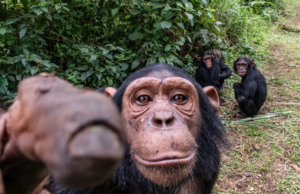GAP Project Spain supports the restoration of “Yellow House”
posted in
23
Jun
2010

The “Yellow House” was the headquarters of Tenerife Anthropoids Station, at Cruz Port, since 1913. At this center the studies on great primates cognitive abilities and intelligence started and it hosted chimpanzees and orangutans.
Its first director, Eugen Teuber (1889-1958), a language expert, came to the conclusion that the communication between humans and chimpanzees was possible through gestures. The second director, Wolfgang Kohler (1887-1967), psychologist, made a lot of experimentation that were put on a book called “Experiences on Chimpanzees’ Intelligence”.
Wolfgang Kohler Association is beginning a fight to restore the “Yellow House” and turn it in a museum of the work developed and of the importance of great primates in human life. GAP Project Spain and International unite in this initiative and ask the Spanish governments for the restoration of the house and it historical collection.
Dr. Pedro A. Ynterian
President, GAP Project International

 Español
Español
 Português
Português








